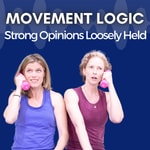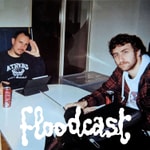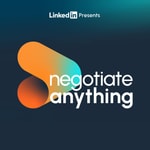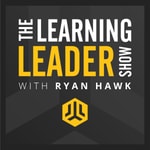Movement Logic: Strong Opinions, Loosely Held – Details, episodes & analysis
Podcast details
Technical and general information from the podcast's RSS feed.

Movement Logic: Strong Opinions, Loosely Held
Dr. Sarah Court, PT, DPT and Laurel Beversdorf
Frequency: 1 episode/12d. Total Eps: 103

Recent rankings
Latest chart positions across Apple Podcasts and Spotify rankings.
Apple Podcasts
🇬🇧 Great Britain - alternativeHealth
30/07/2025#79🇫🇷 France - alternativeHealth
30/07/2025#75🇬🇧 Great Britain - alternativeHealth
29/07/2025#50🇫🇷 France - alternativeHealth
29/07/2025#54🇨🇦 Canada - alternativeHealth
28/07/2025#66🇬🇧 Great Britain - alternativeHealth
28/07/2025#64🇫🇷 France - alternativeHealth
28/07/2025#37🇨🇦 Canada - alternativeHealth
27/07/2025#45🇨🇦 Canada - alternativeHealth
26/07/2025#27🇨🇦 Canada - alternativeHealth
25/07/2025#23
Spotify
No recent rankings available
Shared links between episodes and podcasts
Links found in episode descriptions and other podcasts that share them.
See all- https://www.instagram.com/p
11467 shares
- https://www.instagram.com/hollaformala
475 shares
RSS feed quality and score
Technical evaluation of the podcast's RSS feed quality and structure.
See allScore global : 62%
Publication history
Monthly episode publishing history over the past years.
76: Posture Panic Part 2
Season 5 · Episode 76
mercredi 28 août 2024 • Duration 01:51:01
Welcome to Season 5 and Episode 76 of the Movement Logic podcast! In this second episode in our Posture Panic series, Laurel and Sarah take a deep dive into the currently available research around posture to debunk some of the long held beliefs around posture, pain prevention, muscle activation, and more.
You will learn:
- Does good posture keep you pain free?
- Is Text Neck or Tech Neck really a thing we need to worry about?
- Do we need to spend so much time finding a “neutral spine”?
- Do you need to keep your shoulders “back and down” at all times?
- Does a flexed spine automatically lead to a disc herniation?
- What the actual predictors of pain and injury are (spoiler: it’s not your posture)
- Why we hate @postureguymike’s fearmongering pseudoscience approach to “strength” for seniors
And more!
References:
Slouch: Posture Panic in Modern America
Modifying patterns of movement in people with low back pain -does it help?No consensus on causality of spine postures or physical exposure and low back painAssociation Between Text Neck and Neck Pain in AdultsPosture and time spent using a smartphone are not correlated with neck pain and disability in young adultsIs Neck Posture Subgroup in Late Adolescence a Risk Factor for Persistent Neck Pain in Young Adults?Can we reduce the effort of maintaining a neutral sitting posture?
Exploring lumbar and lower limb kinematics and kinetics for evidence that lifting technique is associated with LBPEvidence for an inherited predisposition to lumbar disc diseaseThe Twin Spine Study: contributions to a changing view of disc degenerationWhy Sitting Posture is Mostly Irrelevant to Future Pain
Effects of sex differences on scapular motion during arm elevationIn vivo 3-dimensional analysis of scapular kinematics: comparison of dominant and nondominant shouldersScapular Dyskinesis Is Not an Isolated Risk Factor for Shoulder Injury in AthletesSign up here to take our free Strength Class on September 19th 8:30am PT/11:30am ET
75: Hypermobile People Are People Too
Season 5 · Episode 75
mercredi 14 août 2024 • Duration 01:20:01
Welcome to Season 5 and Episode 75 of the Movement Logic podcast! In this episode, Laurel and Sarah are joined by Nikki Naab-Levy, strength coach and hypermobility specialist.
You will learn:
- What is hypermobility and how does it differ from flexibility
- What are the Ehlers-Danlos Syndromes and how do they differ from Hypermobility Spectrum Disorder
- Who can and can’t diagnose hypermobility
- Whether hypermobile people should never lock out their joints
- What are the most important considerations when working with hypermobile clients
- The negative consequences of catastrophizing positions as safe or unsafe
- Why social media focuses on the wrong issues for hypermobile people
- Strategies for hypermobile people to sense what level of activity they should undertake on any given day
Sign up here to get on the waitlist for our next Bone Density Course in October 2024!
Reference links:
66: Dismantling Long and Lean Pt. 3
Season 4 · Episode 66
mercredi 1 mai 2024 • Duration 01:17:59
Welcome to Episode 66 of the Movement Logic podcast! This episode is Part 3 of our Dismantling Long and Lean series. In this episode, Sarah and Laurel discuss the origins of Pilates, Barre, and yoga, and the connections between each movement method’s origins and the concept of a Pilates body, a Barre body, and a yoga body.
In this episode you will learn:
- The Pilates origin story, including its clear cut relationship to ballet and the ‘dancer body’
- The problematic origin of the dancer body in the 1960s in New York and its influence on Pilates and barre
- The Barre origin story and the Lotte Berk Method
- How Lotte Berk’s approach was sanitized for future iterations
- Whether the teacher and the teachings can be separated
- Laurel and Sarah’s experiences with the yoga body in their teacher trainings
- Some essential differences between the yoga body and the Pilates or Barre body
- What we can all do going forward to dismantle this patriarchal dominance over womens’ bodies
And more!
Sign up here to get on the Wait List for our next Bone Density Course in October 2024! It’s the only place you’ll get a discount on the course plus fun free bonus content along the way.
Reference Links:
Maintenance Phase: Pilates episode
1962 Sports Illustrated article
The Predatory Genius: what do we do when great artists are also moral monsters
Pilates Anytime: What is a Pilates body?
GX United: The down and dirty history of barre fitness
NY Times: From Shimmying to Standing on Your Head
65: How to Exercise Safely When You're Injured
Season 4 · Episode 65
mercredi 17 avril 2024 • Duration 01:01:23
Welcome to Episode 65 of the Movement Logic podcast! In this episode, Sarah is delving into the topic of exercising while injured. Should you? Shouldn’t you? How do you know when, how much, and what kind to do?
She takes you through a decision making strategy that will make this an easier question to tackle next time you are injured. Sarah also made a PDF Injury Decision Tree that you will receive as bonus content if you sign up for the 2024 Bone Density Course Wait List!
Caveat: This episode is not medical advice and should not be taken as such.
In this episode you will learn:
- Acute vs Chronic injuries - what’s the difference when it comes to exercise
- How different types of injury will impact your movement choices
- Your body’s mechanism of injury response at a tissue healing level
- The tissue healing timeline and what can speed it up or slow it down
- The role pain plays in injury and how it’s not a 1:1 ratio of injury to pain
- Situations where the best option actually is to rest
- What types of exercise are best depending on your level of injury
- Red flags to keep an eye out for that would require medical intervention
And more!
Sign up here to get on the Wait List for our next Bone Density Course in October 2024! It’s the only place you’ll get a discount on the course. You’ll also get the PDF Injury Decision Tree in a future email to the list.
Reference links:
Episode 1: Movement vs Exercise vs Sport
Episode 30: Mastering Physical Literacy with Dr. Chris Raynor, MD
64: Non-Diet Coaching & Silly Certification Tests with Damali Fraiser
Season 4 · Episode 64
mercredi 3 avril 2024 • Duration 52:36
Welcome to Episode 64 of the Movement Logic podcast! In this episode, Laurel is joined by non-diet kettlebell coach Damali Fraiser to talk about what it means to be an inclusive kettlebell coach. We also discuss why a coach's life experience and skills (and not their body) are their real business card. Finally, we get into silly certification tests that limit diversity in an industry that desperately needs more of it.
In this interview you will learn:
- Why kettlebells are excellent tools for cultivating strength, power, and endurance.
- How the shape of a kettlebell makes it uniquely effective for training stability and moving in multi-planar ways.
- What it means to be a non-diet kettlebell coach.
- What building body trust means, and how grasping at some ideal, future body can sabotage some people’s ability to relate to and trust the body they currently have.
- What intersectionality is, and how understanding this concept can help us teach and coach in a way that is inclusive so that more people feel welcome in fitness.
- A critical look at a popular kettlebell certification system, StrongFirst, and a test they impose as a barrier to entry for certifying coaches—the 100 kettlebell snatches in 5 minutes test.
- How the fitness industrial complex negatively impacts folks who don’t conform to societal ideals and what we can do about it.
And more!
Sign up here to get on the Wait List for our next Bone Density Course in October 2024!
Reference links:
63: Dismantling Long and Lean Part 2
Season 4 · Episode 63
mercredi 20 mars 2024 • Duration 01:23:34
Welcome to Season 4 and Episode 63 of the Movement Logic podcast! This is part 2 of a much requested series titled Dismantling Long & Lean. In part 2, Laurel and Sarah discuss the phrase "long and lean" from a science-based, as well as sociological and racial perspective. They cover whether or not you can actually make anyone’s body “longer” and/or “leaner” through formats like Pilates and barre. Additionally, they unpack the harm that appealing to this narrowly, aesthetically-idealized body shape has on students and teachers.
You will learn:
- Common code words used to show preference for thinness in exercise.
- Is there a way to make limbs or muscles longer?
- How do we change the shape of muscles?
- Can we make muscles tone without making them bulky?
- How hypertrophy works and whether or not Pilates or barre are particularly effective for building muscle.
- What does it mean to be bulky versus lean?
- The constrained energy model for metabolism and how it explains why exercise is a poor tool for weight loss and why it’s more complex than calories in and calories out.
- How human metabolism is a product of evolution, not engineering and more like a business on a budget rather than a car that runs on fuel.
- How the science of metabolism explains why exercise is so important for long term health and longevity.
- Whether building muscle makes you burn more calories at rest.
- That fast and slow metabolism doesn’t mean what people think it does.
- Whether or not you can burn fat specifically from “problem areas” on your body.
- How the transatlantic slave trade and the rise of Protestantism influenced the way we think about fatness and thinness.
- How fatphobia and a preference for thinness has been used to craft and reinforce racial, sexual, and socioeconomic hierarchies over the centuries.
- Why “long and lean” is to the 1990s and 2000s as “white and nordic” was to the 1800s and 1900s.
- Why using "long and lean" as a marketing ploy does harm to the teaching profession of Pilates and barre.
And more!
Sign up here to get on the Wait List for our next Bone Density Course in October 2024!
Reference links:
Episode 60: Dismantling Long & Lean Pt. 1
Burn: New Research Blows the Lid Off How We Really Burn Calories…Episode 43: Nutrition Facts vs. Fiction with Dr. Ben House, PhD
62: Make McGill Make Sense
Season 4 · Episode 62
mercredi 6 mars 2024 • Duration 02:04:55
Welcome to episode 62 of the Movement Logic Podcast. In this episode, Sarah and Laurel discuss the recent interview of Dr. Stu McGill on Dr. Peter Attia’s podcast, The Drive. This interview has sparked a lot of internet commentary, so we’re breaking it down for you into what we’re calling Make McGill Make Sense.
You will learn:
- Who are McGill and Attia, and why Attia is interviewing McGill
- McGill’s rigid (pun intended) views on powerlifters vs yogis and what each group should and should not do
- Why McGill “doesn’t believe” in non-specific low back pain, a well documented and researched phenomenon
- How the biopsychosocial model of pain doesn’t exist in his world view
- Why his fearmongering and moralizing approach to movement has been so successful
- How and why he leans into storytelling vs data around low back pain
And more!
Sign up here to get on the Wait List for our next Bone Density Course in October 2024!
Links:
Episode 29 The Cues We Use Part 1
Episode 31 The Cues We Use Part 2
Episode 34 The Cues We Use Part 3
Episode 45 Injury and Safety in Strength and Yoga
Episode 54 Alignment Dogma: Spine
https://peterattiamd.com/stuartmcgill/
https://rheumatology.org/patients/joint-replacement-surgery#
Lancet Study age of hip replacements
Evidence for an Inherited Predisposition to Lumbar Disc Disease
61: Putting Conditioning Back Into Strength & Conditioning
Season 4 · Episode 61
mercredi 21 février 2024 • Duration 01:20:07
Welcome to Season 4, Episode 61 of the Movement Logic podcast! In this episode, Laurel explores whether strength training alone suffices for health and longevity. She compares training stress, intensity, and adaptations of strength training versus high intensity interval training (HIIT) versus cardiorespiratory endurance training. Discover how both HIIT and cardio are forms of conditioning, and why both strength and conditioning are necessary "weekly human maintenance habits" for preventing chronic disease and promoting longevity.
Sign up here to get on the Wait List for our next Bone Density Course in October 2024!
You will also learn:
- What counts as exercise?
- Does HIIT promote strength or cardiorespiratory endurance or both?
- What is aerobic versus anaerobic conditioning?
- What role does cardiorespiratory fitness play in our strength gains and what role does strength play in our cardiorespiratory fitness gains?
- How strength training, HIIT, and cardio compare when considering the following: typical length of a session, work to rest ratios, relative intensities, common limitations to performance, and the specific adaptations each promotes.
- Is strength enough for health and longevity?
- Is walking conditioning?
- Can the fatigue cost of HIIT interfere with our ability to exercise enough throughout the week?
- What should we pay attention to specifically if we want to build strength with HIIT?
- What’s the best way to structure weekly strength and conditioning workouts, specifically when we want to do both on the same day?
Reference links:
Episode 6: How Much ‘Should” You Exercise
High-intensity interval training for health benefits…
Episode 37: Plyometrics—Get More Bang For Your Bones
Episode 46: How Often Should You Strength Trainlll?
60: Dismantling Long and Lean Part 1
Season 4 · Episode 60
mercredi 7 février 2024 • Duration 01:19:26
Welcome to Season 4 and Episode 60 of the Movement Logic podcast! In this much requested first part of a three-part episode series, Laurel and Sarah discuss the phrase long and lean from a historical and sociological perspective. They cover the idealized image of women through art with a historical gaze, then unpick the narrative around becoming long and lean, how diet and exercise became front and center for this impossible ideal, and where we are today with social media, photoshop, and AI in the mix.
You will learn:
- How bad Medieval artists were at drawing human bodies
- How the Renaissance ideal form was the exact opposite of long and lean
- “Ideal” female forms through the 20th and 21st centuries
- The inherent misogyny, internalized anxiety, and social pressure of long and lean
- Whether the diet and exercise boom of the 1980s had anything to do with health
- Why GOOP is indeed a four letter word
- How ‘problem areas’ keep us busy objectifying our bodies and how this is a feature of our modern capitalist society
And more!
Sign up here to get on the Wait List for our next Bone Density Course in October 2024!
Reference links:
The Toast Looks Back: The Best Of Two Monks
https://greatist.com/grow/100-years-womens-body-image#1
https://www.worldometers.info/weight-loss/
59: Are You Certain You Need Certifications?
Season 3 · Episode 59
mercredi 18 octobre 2023 • Duration 02:04:29
Welcome to our supersized Episode 59 of the Movement Logic podcast and the final episode of Season 3! In this episode, Laurel and Sarah discuss certifications for movement professionals. Are they necessary? Are they useful? Do they help promote you, or just the brand? Should you be focusing on it so much?
You will learn:
- Do certifications in the movement industry function to a means to ensure quality control and accountability the way that the equivalent does in a regulated industry
- Do the tests measure meaningful and important qualities of a movement teacher or do they measure what is easy to measure
- What are some drawbacks to certifications
- What are some positive aspects of certifications
- The differences between regulated and unregulated industries
- Does promoting a course as ‘safe’ require any proof in an unregulated industry?
- Can a certification course really claim to be a safer form of movement than any other?
- Why are many teachers looking for certification in their continuing education classes?
- The value of longer form, apprentice/student to teacher/mentor relationship versus a weekend training
- That Yoga Alliance is not the evil overlord that so many seem to think it is
- Does having letters after your name make you more credible or trustworthy?
Episode 48: Alignment Dogma - Pelvis
Episode 54: Alignment Dogma - Spine
Episode 58: Alignment Dogma - Shoulders
Visit our website www.movementlogictutorials.com for more paid and free education!
Get on our mailing list to be kept in the know about upcoming courses.









